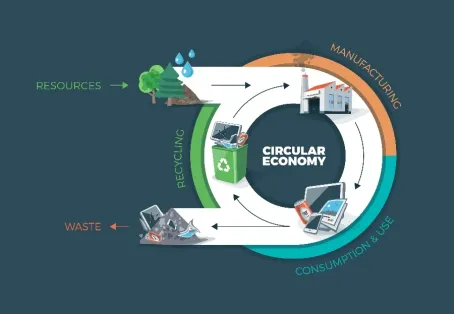Introduction
As electric vehicles (EVs) become a dominant force in transportation, concerns about sustainability beyond zero-emission driving are growing. A circular economy for EVs focuses on minimizing waste, maximizing resource efficiency, and ensuring that batteries and components have a second life. This approach can significantly reduce the environmental impact of EVs while promoting long-term sustainability.
Recycling EV Batteries: Closing the Loop
One of the biggest challenges in EV sustainability is battery disposal. Lithium-ion batteries contain valuable materials like lithium, cobalt, and nickel, which can be recovered through recycling. Companies are developing advanced recycling methods to extract these materials and reintroduce them into the supply chain, reducing reliance on mining and minimizing environmental harm.
- Hydrometallurgical Recycling: Extracts metals using chemical processes.
- Pyrometallurgical Recycling: Uses high temperatures to recover key materials.
- Direct Recycling: Preserves battery components for reuse, increasing efficiency.
With growing demand, recycling infrastructure needs to expand globally to support the increasing number of retired EV batteries.
Repurposing EV Batteries: A Second Life Beyond Cars
Even after their use in vehicles, EV batteries retain a significant portion of their storage capacity. Instead of being discarded, they can be repurposed for various applications, such as:
- Energy Storage Solutions: Second-life batteries can store energy for homes, businesses, and power grids, helping integrate renewable energy sources like solar and wind.
- Backup Power Systems: Used batteries can be deployed in emergency backup power systems for industries and residential areas.
- Grid Stabilization: Repurposed batteries can support electrical grids by balancing energy demand and supply.
Reducing Waste in EV Manufacturing and Usage
To fully embrace a circular economy, EV manufacturers are incorporating sustainable practices into production:
- Eco-Friendly Battery Designs: Researchers are working on solid-state and sodium-ion batteries that use more abundant materials and are easier to recycle.
- Sustainable Sourcing: Automakers are prioritizing ethical mining practices and sourcing recycled materials for new batteries.
- Lightweight and Durable Materials: Reducing material use in EV construction lowers waste and improves efficiency.
Government Policies and Industry Initiatives
Governments worldwide are implementing policies to promote battery recycling and repurposing. Initiatives such as extended producer responsibility (EPR) regulations require manufacturers to take responsibility for battery disposal and recycling. Some key global efforts include:
- The European Union’s Battery Directive mandates high recycling standards.
- The U.S. Department of Energy is funding battery recycling research.
- China has strict policies on battery collection and repurposing.
Conclusion
The transition to a circular economy for EVs is crucial to making electric mobility truly sustainable. By focusing on recycling, repurposing, and reducing waste, we can minimize environmental impact, conserve valuable resources, and extend the lifespan of EV components. As technology advances and regulations strengthen, the circular economy will play a vital role in shaping the future of electric transportation.
